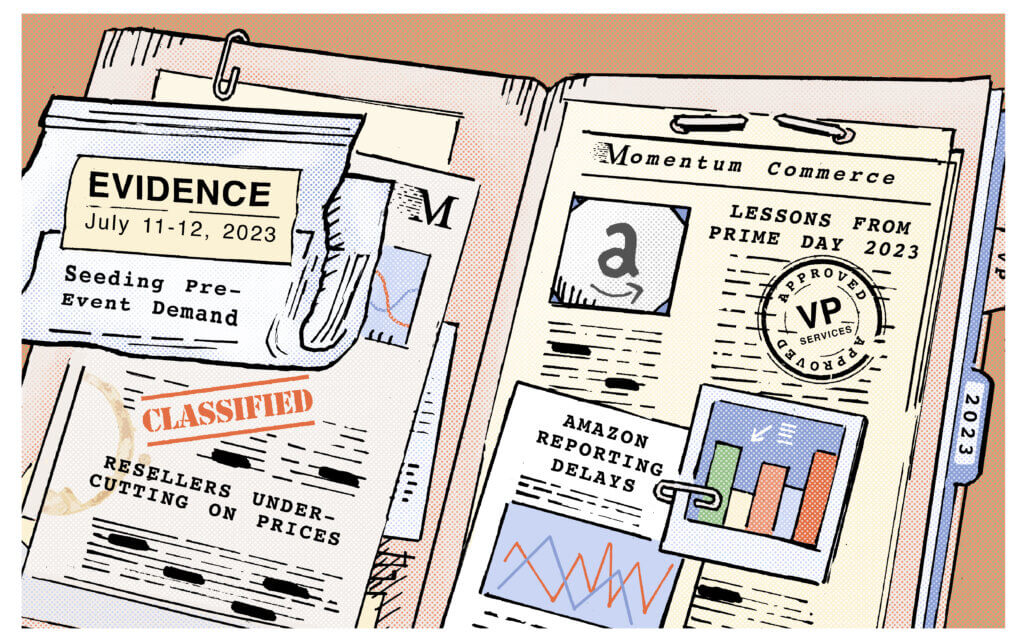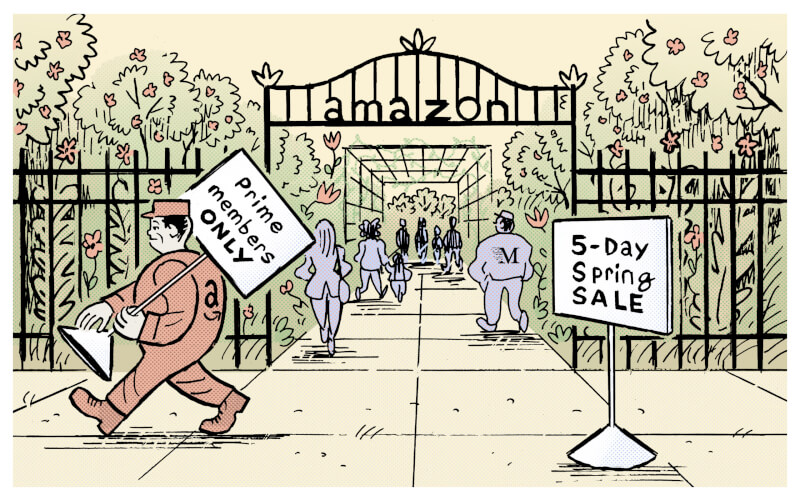
Lessons from Prime Day
July’s Prime Day was the biggest Prime Day event ever. But despite the great results, it is crucial to take a step back and review key lessons learned from the sale event in order to be thoroughly prepared for upcoming Prime Events and holidays.
We spoke with Todd Bowman, Vice President of Services at Momentum Commerce, to discuss some overall learnings that came as a result of this year’s 48-hour sale.
1. “Assume that reporting is likely to break at some point – have a process in place so you can operate when that happens”
After the well-publicized Black Friday reporting issues on Amazon, we knew the potential for reporting errors to completely upend our plans for an event like Prime Day. Our client teams took a proactive approach here, checking Amazon’s reporting constantly so it’d be easier to spot irregularities if they occurred.
Despite a seemingly normal Ad Console, our team quickly discovered that spend totals were lagging behind by about 2-3 hours on Wednesday, the first official Prime Day. While totals were back on track by 8 PM that night, our team soon decided that the best method to track hourly performance was to use Amazon Marketing Stream (AMS), as opposed to the Ad Console. Todd’s biggest takeaway here is that Ads Console is an extremely useful tool, but brands should expect delays on the platform during events like these due to heavy load. With AMS data now available for all Sponsored Ad Campaigns, utilizing this ad reporting product for spend tracking will be a more efficient tool for future events.
2. “Be on top of the Buy Box for every single product, and have levers to pull when a reseller comes in”
Even if you’ve done everything right with Amazon to protect your brand from unauthorized resellers during events like Prime Day, some may be able to creep in. The incentives for doing so during high-traffic periods when everyone knows sales will be higher are that great. Through constant measurement of the Buy Box and associated metrics, we caught a reseller interfering with a Prime Day deal for one of our clients, immediately upleveled across a variety of our contacts at Amazon, and while waiting for a response dropped the price to match the reseller. Amazon did eventually correct the issue, but with time of the essence, making these proactive steps makes a meaningful difference in terms of the event’s overall success. Todd’s takeaway, in this case, is to have your Strategic Account Services (SAS) contact on speed dial; the quicker the problem can be resolved, the better.
3. “Seeding demand pre-event is a big help in driving success overall. Particularly for hero products in advance of tentpole events, no detail is too small.”
The days leading up to these tentpole events are arguably the most critical. Customers are ‘window-shopping’ for the best deals, and adding items to purchase during the sale event. Sales in the 10-day period leading up to this year’s Prime Day were down tremendously while customers scoured Amazon for the best deals. Because Amazon more aggressively personalized deal pages during this past Prime Day, driving PDP views and other top-of-funnel actions prior to the sale event was a big theme across successful brand’s strategies pre-Prime Day.
With this in mind, the key is finding the right balance of driving top-of-funnel interest in the days leading up to the sale, but not pushing too much that you lose flexibility during the event itself.
Hero products will be at the forefront of your brand’s ‘image’ so it is beneficial to modify all the details you deem necessary. No detail is too small, especially with extreme volumes of traffic viewing the products.
4. “If you are going after Share of Voice (SOV), consider these two tips. Number 1, SOV on a non-branded term should be considered part of the brand budget, rather than performance budget. Number 2, consider setting up a separate campaign in Amazon Marketing Cloud (AMC) for specific targeted keywords.”
If a non-branded term is on your priority list, keep that in mind when designating the brand budget. For a speaker company targeting a generic term like ‘Bluetooth speaker’ in advance of a sale event, the goal isn’t primarily to drive purchases, but PDP views that will naturally influence deals showing up on those consumers’ homepages during the sale event itself. This dynamic makes it wise to incorporate the budget for that term within the branded budget and target KPIs like brand search growth and detailed page views.
Additionally, for these generic terms, creating a specific campaign for each of these keywords separately in AMC will improve the reporting process. Categorizing a term as its own campaign will allow it to stand out in the path-to-purchase report, and therefore easier to run in reporting.
Keeping these recommendations in mind prior to Prime events and holidays will allow you to be proactive in the event of any mishaps. Planning ahead for the Prime Early Access Sale or Black Friday/ Cyber Monday? Head over to our Amazon Brand Leaderboard to benchmark the prior year’s performances!




